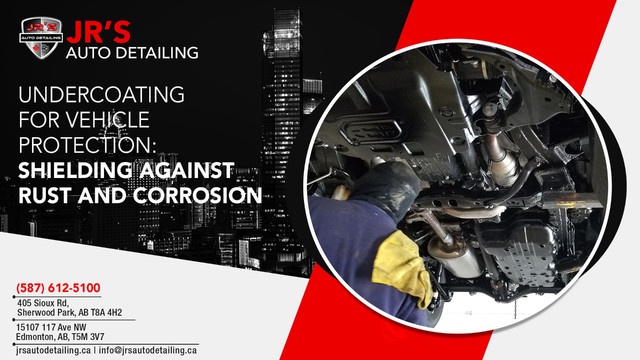In the ever-evolving automotive industry, where vehicle maintenance is as crucial as design and performance, undercoating has emerged as a vital player. Among the many service providers in this space,Jr’s Auto Detailing has made a mark for itself. However, in this era of heightened environmental awareness, it's crucial to scrutinize the environmental considerations associated with undercoating products.
Understanding Undercoating:
Undercoating, or rustproofing, is a process where a protective layer is applied to the underside of a vehicle to guard against rust and corrosion. This is particularly significant in regions with harsh weather conditions, where roads are salted during winter to melt ice, contributing to accelerated corrosion of the vehicle's undercarriage.
Jr's Auto Detailing, like many auto detailing service providers, offers undercoating services to prolong the life of vehicles and protect them from environmental damage. However, the environmental impact of undercoating products can vary significantly based on the formulations used.
Common Components in Undercoating Products:
Petroleum-Based Compounds: Traditional undercoating products often contain petroleum-based compounds. These can raise environmental concerns due to their extraction process and non-biodegradable nature. Additionally, the application of such products might release volatile organic compounds (VOCs) into the atmosphere, contributing to air pollution.
Water-Based Formulas: In response to environmental concerns, many undercoating products have shifted towards water-based formulas. These are generally more environmentally friendly as they have lower VOC content and are easier to clean up. Water-based undercoating is often seen as a greener alternative to traditional petroleum-based options.
Polyurethane and Rubberized Compounds: Some modern undercoating products incorporate polyurethane or rubberized compounds. These not only provide effective rust protection but also tend to be more resistant to environmental wear and tear. However, the environmental impact of the production and disposal of these compounds should be considered.
The Environmental Impact Lifecycle:
Production Phase: Assessing the environmental impact of undercoating products requires evaluating their entire lifecycle. In the production phase, the extraction of raw materials, manufacturing processes, and energy consumption contribute to the overall footprint. Opting for suppliers with sustainable practices can mitigate this impact.
Application Process: The method of application is crucial. A controlled and efficient application reduces wastage, which is especially pertinent for solvent-based products. Technicians at Jr's Auto Detailing are trained to apply undercoating products judiciously, minimizing excess use.
Long-Term Effectiveness: An effective undercoating extends the life of a vehicle, reducing the need for premature replacements. While this doesn't directly address the environmental impact of the undercoating itself, it contributes to the overall sustainability of the automotive industry.
End-of-Life Considerations: When the vehicle reaches the end of its life, the undercoating compounds are released into the environment. Here, biodegradability becomes a key factor. Water-based and environmentally conscious formulations are preferable in this context.
Environmental Initiatives by Jr's Auto Detailing:
Jr's Auto Detailing is aware of the environmental impact associated with undercoating products and has taken proactive measures to mitigate its footprint.
Product Selection: The company has carefully curated its undercoating product lineup, giving preference to formulations with lower environmental impact. This includes a shift towards water-based solutions and products with fewer harmful chemicals.
Waste Management: Proper disposal of waste generated during the undercoating process is crucial. Jr's Auto Detailing has implemented effective waste management practices, ensuring that any waste generated is disposed of in an environmentally responsible manner.
Technician Training: Technicians at Jr's Auto Detailing undergo regular training not only in the application of Undercoating Edmonton but also in the importance of minimizing environmental impact. This includes adhering to guidelines for product application to reduce excess usage.
Conclusion:
In conclusion, while undercoating is essential for vehicle maintenance, the choice of products and application methods significantly influences its environmental impact. Jr’s Auto Detailing Edmonton & Sherwood Park is attuned to these concerns, actively working towards minimizing its environmental footprint. Customers seeking undercoating services from Jr's Auto Detailing can rest assured that their vehicles are being treated with a careful balance between effective protection and environmental responsibility. As consumers become more eco-conscious, the automotive industry, including service providers like Jr's Auto Detailing, plays a vital role in shaping a sustainable future.
#edmontonundercoating #rustguard #vehiclelongevity #undercarriageprotection #rustprevention #undercoatinginedmonton #jrsautodetailingedmonton #jrsautodetailingsherwoodpark


No comments yet